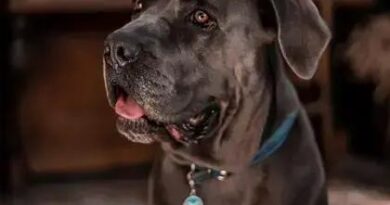What is Yard pet proofing
What is Yard Pet Proofing?
Yard pet proofing refers to the process of making your outdoor space safe and secure for your pets. This involves identifying potential hazards and taking steps to mitigate risks that could harm your furry friends. By implementing yard pet proofing measures, pet owners can create an environment where their dogs can play freely without the constant worry of accidents or injuries.
Why is Yard Pet Proofing Important?
Understanding the importance of yard pet proofing is crucial for any pet owner. Dogs are naturally curious creatures, and they often explore their surroundings without understanding the dangers that may lurk. From toxic plants to sharp objects, a lack of proper yard safety can lead to serious health issues. By pet proofing your yard, you ensure that your pet can enjoy the outdoors safely, reducing the risk of injuries and health problems.
Common Hazards in Your Yard
There are several common hazards that pet owners should be aware of when it comes to yard safety. These include poisonous plants, such as azaleas and lilies, which can be harmful if ingested. Additionally, chemicals used for lawn care, like fertilizers and pesticides, can pose significant risks. Sharp tools, garden equipment, and even small objects like sticks can lead to injuries. Identifying these hazards is the first step in effective yard pet proofing.
How to Identify Potential Risks
To effectively implement yard pet proofing, you need to conduct a thorough inspection of your outdoor space. Look for any items that could be harmful to your pet, including broken glass, sharp edges, and small objects that could be swallowed. Additionally, assess the plants in your yard to ensure they are non-toxic. Taking the time to identify these risks will help you create a safer environment for your pets.
Creating a Safe Outdoor Space
Once you have identified potential hazards, the next step in yard pet proofing is to create a safe outdoor space. This can involve removing toxic plants, securing hazardous tools, and ensuring that your yard is free from debris. Consider installing fences or barriers to keep your pets contained and away from dangerous areas. A well-maintained yard not only enhances your pet’s safety but also improves the overall aesthetics of your outdoor space.
Using Pet-Friendly Landscaping
Pet-friendly landscaping is an essential aspect of yard pet proofing. This involves selecting plants and materials that are safe for pets while still being visually appealing. Opt for non-toxic plants, and consider using mulch or gravel instead of traditional grass, as these materials can be easier to maintain and less likely to harbor pests. By choosing pet-friendly landscaping options, you can create a beautiful yard that is also safe for your furry companions.
Implementing Safety Features
In addition to removing hazards, implementing safety features can enhance yard pet proofing efforts. Consider adding features like pet gates, secure fencing, and designated play areas. These elements not only help keep your pets safe but also provide them with a space to enjoy the outdoors without the risk of wandering off or encountering dangers. Safety features are a proactive approach to ensuring your pet’s well-being.
Regular Maintenance and Monitoring
Yard pet proofing is not a one-time task; it requires regular maintenance and monitoring. Periodically check your yard for new hazards, especially after storms or seasonal changes. Keep an eye on your plants and landscaping to ensure they remain safe for your pets. By staying vigilant and proactive, you can maintain a safe outdoor environment for your furry friends.
Educating Yourself and Others
Finally, educating yourself and others about yard pet proofing is vital. Share your knowledge with fellow pet owners and encourage them to take similar precautions. By fostering a community of awareness, you can help create safer environments for pets everywhere. Understanding the principles of yard pet proofing not only benefits your pets but also contributes to the overall well-being of the pet community.




